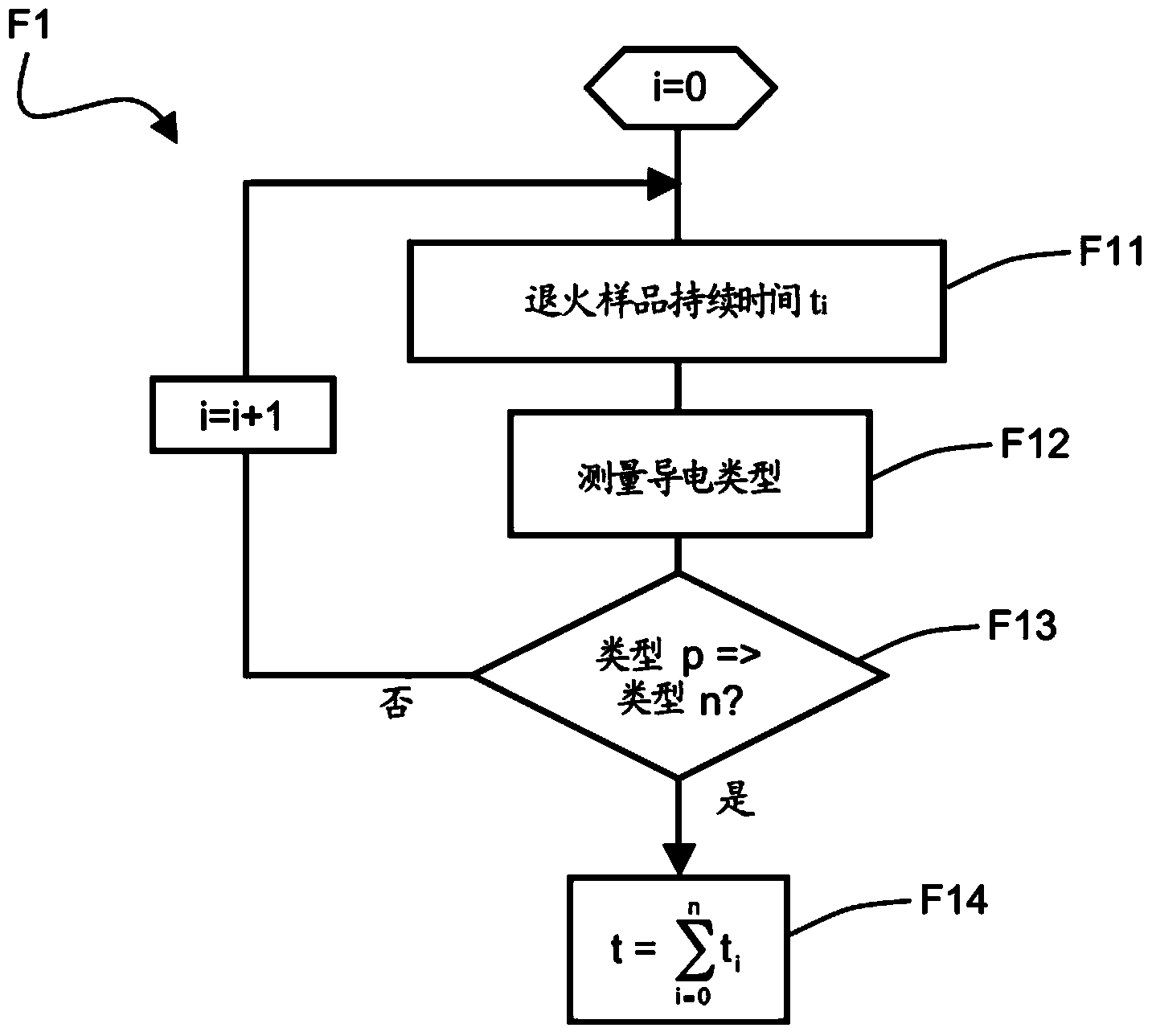Method for determining interstitial oxygen concentration
A technology of interstitial oxygen and concentration, which is used in spectrum investigation, material thermal analysis, instruments, etc., can solve the problems of substrates that can no longer be used, difficult to apply substrates, and difficult to remove.
- Summary
- Abstract
- Description
- Claims
- Application Information
AI Technical Summary
Problems solved by technology
Method used
Image
Examples
Embodiment Construction
[0025] In a p-type doped silicon substrate, the free charge carriers are holes. Their number depends on the concentration of implanted dopant impurities in the silicon N A , the dopant impurity is usually a boron atom (B). Such atoms are called electron acceptors.
[0026] When the substrate is mainly doped with boron, the hole concentration p 0 Equal to boron concentration: p 0 =N A =[B].
[0027] When the substrate also includes up to a non-negligible concentration of N D The initial concentration of free holes, p 0 Equal to acceptor atomic concentration N A Subtract the donor atomic concentration N D :p 0 =N A -N D . This relationship is valid if the acceptor and donor atoms are only ionized once. For donor and / acceptor atoms that ionize several times, the degree of ionization is applied at the concentration N A and / or N D (p 0 =αN A -βN D ).
[0028] Subjecting the substrate to a temperature comprised between 200°C and 500°C will result in the formation ...
PUM
 Login to View More
Login to View More Abstract
Description
Claims
Application Information
 Login to View More
Login to View More - R&D
- Intellectual Property
- Life Sciences
- Materials
- Tech Scout
- Unparalleled Data Quality
- Higher Quality Content
- 60% Fewer Hallucinations
Browse by: Latest US Patents, China's latest patents, Technical Efficacy Thesaurus, Application Domain, Technology Topic, Popular Technical Reports.
© 2025 PatSnap. All rights reserved.Legal|Privacy policy|Modern Slavery Act Transparency Statement|Sitemap|About US| Contact US: help@patsnap.com



